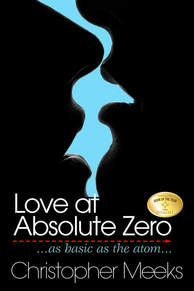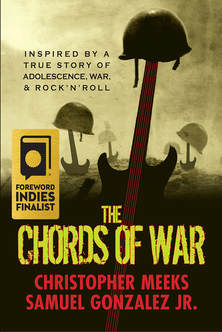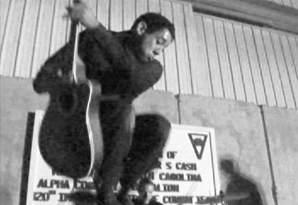
As I wrote when I started this series, I’m doing my best to isolate each marketing thing I try, but marketing is a confluence of forces. It’s much like the Sauk River meeting the Mississippi River way up near St. Cloud, Minnesota. Rapids occur. The nearby town is named, appropriately, Sauk Rapids. Here, I’m aiming to make Book Rapids.
Putting a book on sale is one way of getting attention for a short while. Merely changing the price does no good if no one knows about it. You need to announce it. That may mean using an advertisement, social media such as Facebook, Twitter, and Instagram, as well as emailing or sending out a newsletter.
COST VS. PRICE
First, let’s consider what you can reduce in price for a special sale. There’s not much to do with the price of printed books. The production costs are cut-and-dry. If you use printing-on-demand, as we do at White Whisker Books, it costs about four times what big publishers get for printing in a big run.
Of course, big publishers then need to warehouse the books. Their sales force has to get book orders, and then books are shipped in bulk to stores and to distributors such as Ingram. Follow-up visits to the stores assure that the books are placed well. Small publishers can’t do any of this. They rely on distributors alone, and those prices are fixed, too.
In short, a trade paperback book brings in two to five dollars for us when the retail price is $16.95. That’s not a huge profit, and cutting the price by a buck will have no bang.
By the way, when bookstores return books, all the profits go away. One book, in particular, still is in the red for us. That’s because the book received such great reviews that bookstores ordered in quantity and then returned in quantity when they did not sell.
Nowadays, we don’t allow books to be returned, which means they are not ordered by bookstores. That’s the print book business.
EBooks, however, have none of the printing and distribution costs of printed books. Still, there is the editing, proofreading, cover design and marketing costs to pay for, so eBooks are far from cost-free. Still, when it comes time to offer a bargain, you can drop the price for a short time.
SPECIAL PRICE
Ebook pricing is the area that brings conflict and discussion. When Amazon first brought out its Kindle, Amazon pressured all publishers to price eBooks no higher than $9.99. Amazon reasoned, correctly, that if people were going to change their reading style, they needed incentive. This made many publishers furious, though. If they were selling a hardback at $29.95, then $9.99 seemed incredibly cheap. The publishers did not like “new.” They only went along because Amazon sold so many of their printed books.
At some point, the big publishers rebelled, and that’s when Steve Jobs jumped in with his iBooks, telling the publishers they could price eBooks at any price they wanted, and he’d sell them that way.
On the other end of the spectrum, self-publishers were willing to sell their books at 99 cents each—and then free—just to get their books out there. If they did everything themselves—researched, wrote, edited, and designed—then their costs were low. Of course, people who edit and proofread their own work usually have a fool for a client. Still, there are geniuses out there.
DARCIE CHAN
I met one such genius, Darcie Chan, about seven years ago. She was an attorney working for the U.S. Senate. She found herself with six months off before her job started, so she wrote the book she always wanted, The Mill River Recluse. It’s about a shy woman who secludes herself in her house years after she had married a wealthy young man, and the woman harbors a secret.
Darcie found an agent right away who loved her book, and when the agent couldn’t get it published, she urged Darcie to self-publish it but not in print: eBook only. That’s because, the agent said, big publishers don’t see eBooks as being published. Price the eBook at 99 cents. The agent hoped it would find an eager audience and prove to a big publisher that it needed to print this book.
Boy, did Darcie’s novel get noticed. Her book was #4 that year on the USA Today best seller list. Darcie was also great at advertising. Even though she only made 33 cents a book, she was making more money than as a lawyer. She was getting interviewed everywhere, and when the New York Times and Wall Street Journal interviewed her, I knew she’d done something extraordinary.
Soon she had a publisher who didn’t want to publish The Mill River Recluse, but, rather, two new books. That changed over time. The original book is now available in hardback, paperback, audio, and eBook. She wrote two sequels. Darcy quit the Senate, had a child, and writes full-time.
ME
I’m not that genius. My books, I’ve learned, are just quirky enough to not be mainstream. It’s also why people like them. You have to like the oddball Gunner Gunderson, physics genius, who takes three days off from his research to find a wife using the Scientific Method in Love at Absolute Zero. Chaos ensues.
With The Chords of War, however, I’ve hit on a book that hits at the gut level. With humor and horror, we experience the Iraq War from a musician’s sensibility. That’s why I decided I had to find a new way to market it. Other people who tried inexpensive or “free” after Darcie’s model flooded the system. You can find over 60,000 free books at any given time on Amazon. What people forget is that Darcie’s book had ardent followers. She has over 2,100 reviews for The Mill River Recluse, most of them five-star. That’s a clue: get reviews.
I’ve experienced over the years that too low a price early on means no one buys the print version. I’ve learned that people who buy the print version are more likely to read it than someone who gets a free or 99-cent book, now that there are so many of them. (When Darcie did it, it was unusual.) If people read your book, you’re more likely to get people to like it and write a review. If they write good reviews, you might have readers for your future work. I’m thinking long-term.
FOR THIS EXPERIMENT
For The Chords of War, I realized most big publishers still price their eBooks at $9.99 or higher. Thus, $8.99 could say two things: a) It’s a serious book worth that price, and 2) It’s slightly less expensive that other serious books.
It also allows me to drop the price to $1.99 for a few days, which it is a good bargain. I’ll raise it $1 a day until, maybe $5.99, and I’ll see how it does there. Also, I’m still hoping to use Bookbub for a special sale, but Bookbub looks up what your book has sold for during the last several months, and if $1.99 isn’t special, they won’t let you use their service.
To announce this new price, I’m using Kindle Nation Daily, who will promote my book for one day, on Thursday, April 12th. Kindle Nation Daily is a service that promotes Kindle books through email, through its website, and through social media. Free, 99-cents, or $1.99 are encouraged. Readers sign up to get announcements.
When Kindle Nation Daily first started, there was nothing like it, and to pay $50 to get your 99-cent book announced brought results. When I first tried it, I had over 500 books sold in a day. That brought in $165, minus the $50, so I made $115. Plus the ranking of my book went way up. Then the site started offering more and more spaces and deals, and its effectiveness went down.
Along came Bookbub, and one of its mandates was that the books they promoted had to be really good. That meant a certain number of reviews and high ratings, even though they never gave the exact requirements. I remember the first time I tried them. I had to pay something like $150, which seemed a huge risk, but it brought in something like 1500 sales in a day, and my ranking jumped into the top 100 for Kindle books. Plus Bookbub also sold to Nook, Kobo, Smashwords, Google Play, and Apple iBooks. I had a larger audience. I wish I remember those exact figures, but the income was good on all platforms.
One could only use Bookbub for a book every three months, but I did so religiously, for my and all my authors’ books. It was great for a while.
Then Bookbub stopped taking my books. What happened is the big publishers found Bookbub, and so a John Jakes or Michael Connelly or Margaret Atwood book on a special price became a tremendous thing. I’d be thrilled to try them again.
I haven’t tried Kindle Nation Daily for a few years now. I paid $119 for a one-day ad, which will also appear for no extra charge on Book Gorilla, another Kindle reader site. Below is the ranking of The Chords of War on Kindle as this goes out. My goal is to sell at least 180 copies, which will pay for the cost of the ad. If I get that many, my ranking will go way up, too. The actual number sold, I won’t get a report for at least six weeks, but I can intuit sales from the ranking.
#1,153,406 Paid in Kindle Store (See Top 100 Paid in Kindle Store)
#7124 in Kindle Store > Kindle eBooks > Literature & Fiction > Genre Fiction > War
#13574 in Books > Literature & Fiction > Genre Fiction > War
#69598 in Kindle Store > Kindle eBooks > Teen & Young Adult
Let’s see what happens.



 RSS Feed
RSS Feed